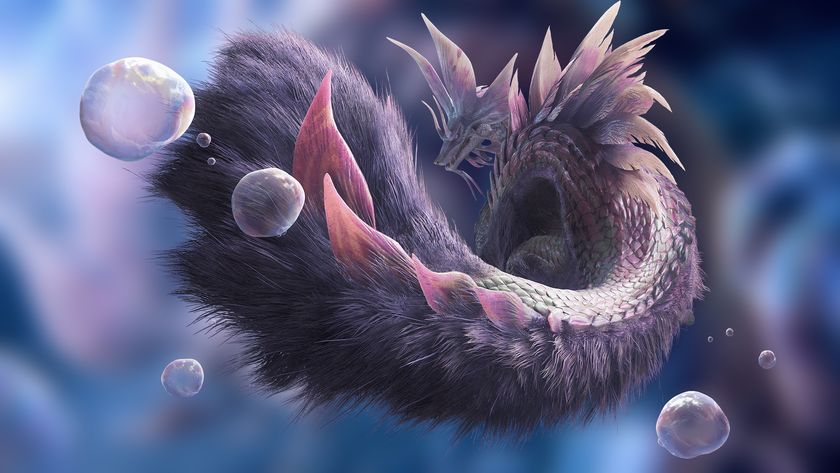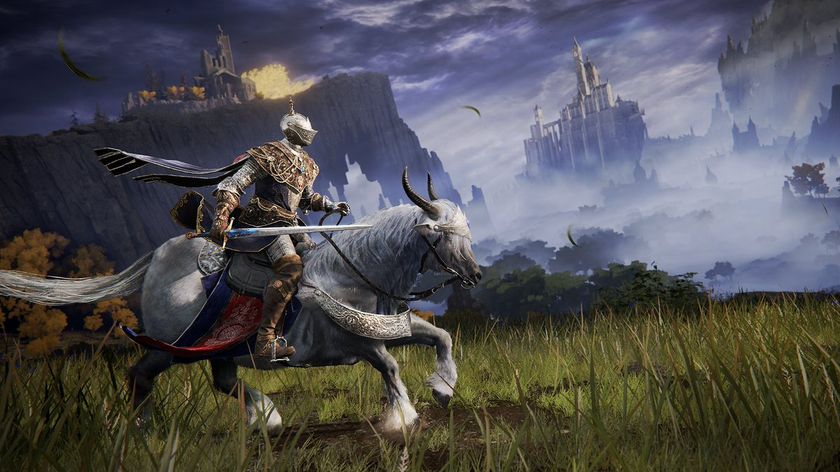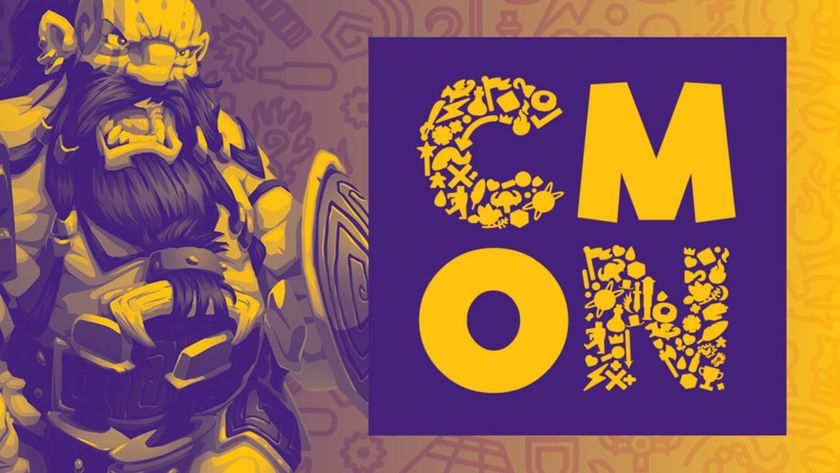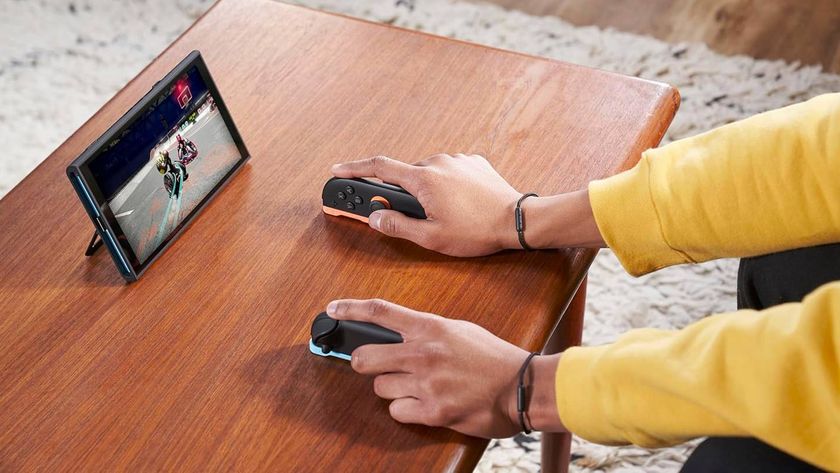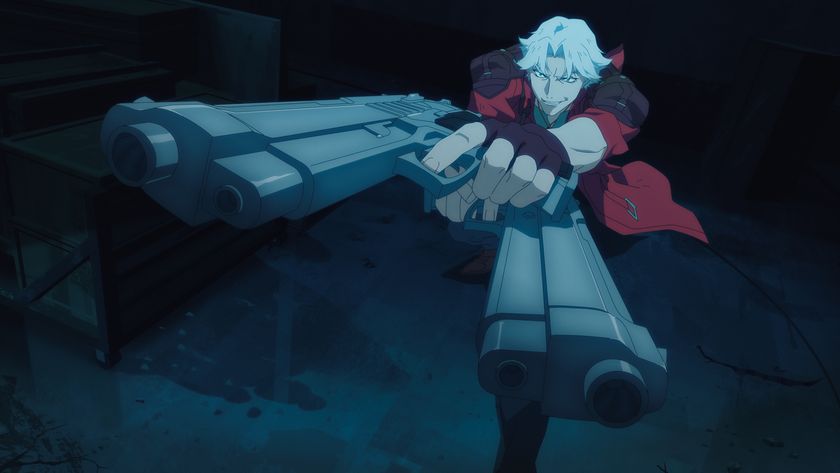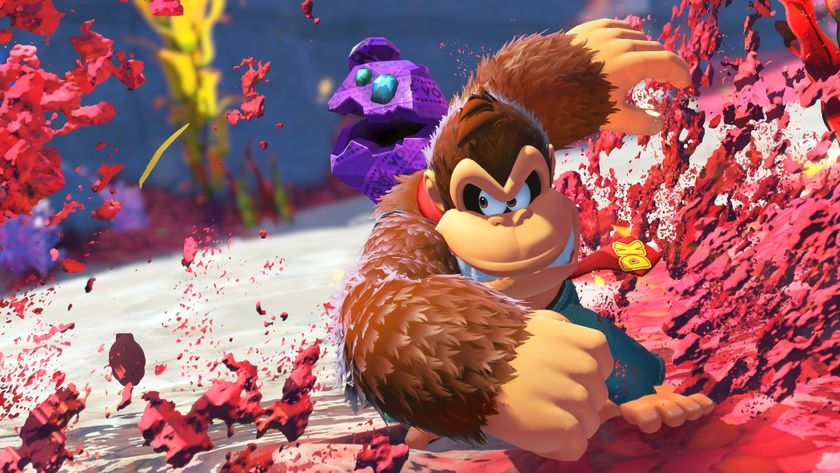How Bullet Train became this summer’s biggest action movie
Total Film speaks to Bullet Train director David Leitch and producer Kelly McCormick about accidental TikTok mascots, Brad Pitt’s divisive outfit, and the best actor’s notes ever
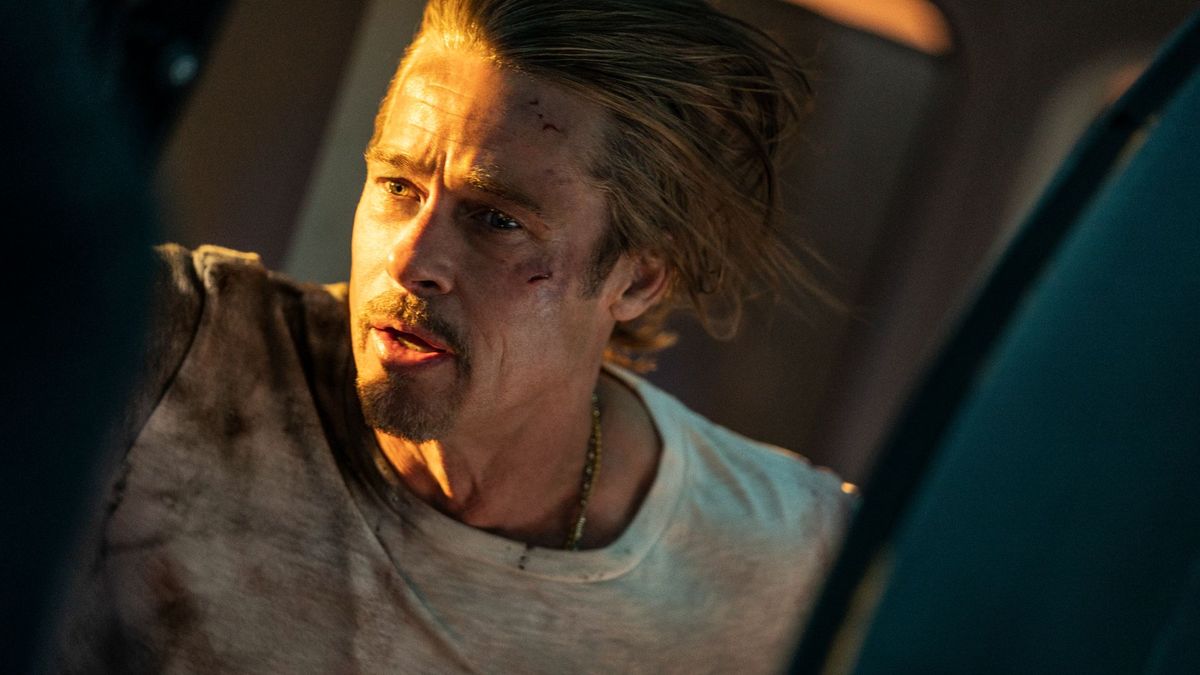
Director David Leitch had to be convinced to jump onboard Bullet Train. The new action movie sees Brad Pitt’s assassin Ladybug colliding with multiple colorful and quirky assassins after a simple job goes very wrong on a high-speed train bound for Tokyo – but it was almost the end of the line for Leitch before Bullet Train even started rolling.
"He almost didn’t do the movie! ‘How am I going to do great action? I’m stuck on this train!’" recalls producer Kelly McCormick while sat down with Leitch for an interview in London.
Leitch, a stuntman-turned-director who cut his teeth co-directing John Wick, graduating to franchise blockbusters Deadpool 2 and Hobbs & Shaw, wasn’t convinced that the tightly packed interiors and cramped cars of a train would make for worthwhile action set-pieces.
"That was Kelly who really convinced me that the constraints were going to be the special sauce of the movie," Leitch says. "She’s right. Ultimately, as a choreographer, you want to give yourself problems and making the fights interesting in that small environment was really fun. We got inventive: we put the quiet car in there, we put the mascot car in there you fight in different pieces of the car to make it interesting. That allows you to have all of these props you wouldn’t normally have."
All aboard the Bullet Train
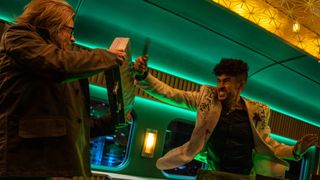
With that first bumpy ride out of the way, Leitch and his cast of hitmen – Pitt is joined by Brian Tyree Henry and Aaron Taylor-Johnson’s vaudeville-style double act Lemon and Tangerine, plus The Kissing Booth’s Joey King, Warrior’s Andrew Koji, and rapper Bad Bunny – set about transforming what was originally envisioned as a dark, vicious tale of revenge into something that blends drama with laughs and larger-than-life personalities.
"When we got on set, it was infectious. We were having this really fun time," Leitch says. "Lemon and Tangerine, especially: we were exploring these characters and they were getting bolder and bigger. We saw how brilliant it was and we embraced it. I remember taking Aaron behind the monitor, he was a little insecure – it was day three. He was thinking he was going too big. I’m like, ‘You sit here and watch this and tell me it’s not funny.’ He would be laughing at his own jokes [and] we knew the tone was right and we all leaned into it."
The star of the show, Brad Pitt, helped lead the way in that regard – even if some of his outfit choices (Pitt wears a bucket hat and thick glasses from Bullet Train’s outset) didn’t go down well with everyone. "Brad came in on fire for big and broad," Leitch says. "He was leaning into Buster Keaton and Jackie Chan from the beginning. He was leading the way."
Sign up for the Total Film Newsletter
Bringing all the latest movie news, features, and reviews to your inbox
McCormick continues: "He brings something extraordinary to every character. That’s exactly what it felt like when he boarded the train, so to speak. He saw [Ladybug] as a chump and an underdog. He drove that home with the bucket hat and glasses, which the studio was not very happy about! Why cover that gorgeous face, you know? He’s such a big personality and is known globally, how are you going to make [him] an underdog from the moment ‘go’? It was a brilliant choice, it really was."
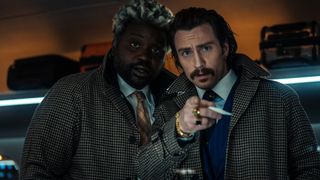
It was Tyree Henry’s Lemon, however, who benefitted most from the detour into lighter territory. The Thomas the Tank Engine-obsessed hitman ("He didn’t go full method on Thomas," Leitch jokes) played "second fiddle" to Taylor-Johnson’s Tangerine during the scripting stages. The suited-and-booted pair were on a far more even keel in the finished product, all thanks to Henry’s input. That collaboration is something Leitch calls "the greatest notes he’s ever gotten from an actor."
"We did have to do some balancing at the beginning," the filmmaker adds. "When [the script] first came in, Tangerine was a bigger character… When we were talking to Brian about it early on and he was like ‘I want to play Tangerine. We’re like, ‘Why?’ and he says ‘Because he actually has more to do as a character, he’s a more interesting character, and here’s why.’ He brought up some really poignant points. We went back to the material and did some work on Lemon to even these characters out."
On Tangerine’s preoccupation with Thomas, Leitch was drawn to the character’s warped moral compass and Tyree Henry’s performance that – while played for laughs – is still fundamentally part of the character’s psyche.
"I love characters that have a code. I think it's sort of fun and fascinating," Leitch says. "This might have been slightly sort of a satirical version of that, but having that character trait in a movie like this can go south really quickly. Brian brought it in and really embraced it in this really earnest and adult way."
"There are versions of that where he’s a simpleton or he’s childlike, but he’s not. He’s an adult assassin who’s a badass. He makes that sort of philosophy scary and daunting, then it ultimately ends up being his sort of superpower. He knew exactly what to do with it."
Making your own luck
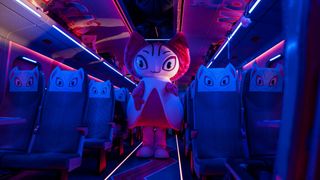
“He was leaning into Buster Keaton and Jackie Chan from the beginning. He was leading the way.”
Director David Leitch on Brad Pitt
A major theme of Bullet Train is luck – both good and bad. It’s an apt throughline, too, given how much of filmmaking is a continual collision between meticulous planning and improvising on the fly. Leitch flirted with chance in his own inimitable way – which led to the fortuitous birth of the movie’s cutesy Japanese mascot (and now minor TikTok star) Momomon.
"Making a movie is exactly like a bullet train. You’re caught in a current of things you can’t control," Leitch says. "You need to grab onto the things that are positive and you need to look at the problem opportunity. What worse luck has your bad luck spared you from? One great sort of moment of luck was when a costume designer was showing us a photo of a conductor shoving this mascot on the train…"
"It’s a giant thing," McCormick interjects. "They don’t like to be late so he’s shoving it in. Our production designer David Scheunemann had already shown us themed cars in Japan, Pokemon, Hello Kitty, that kind of stuff. He was already cooking up this mascot for some signs and we saw this photo for this giant plushie and we were like ‘We’ve got to make this our mascot.’"
"Then Momomon just spun into more and more ideas," Leitch explains. "We started to adjust the script [so it became] an integral part. We were looking at a costume and there’s something else that triggered us."
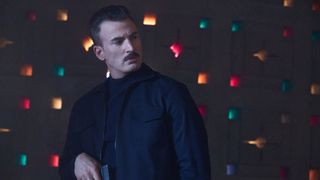
The Gray Man directors talk making Netflix's most expensive movie
The crisscrossing of mascots, assassins, and Brad Pitt sounds like a journey as overstuffed and packed as any early-morning commute. That pressure is alleviated by a structure that spends time with each new assassin that boards the bullet train, telling their story through flashbacks. This, in turn, ups the ante and increases the stakes when they all eventually collide. In an industry punctuated by spin-offs, it feels refreshingly reverse engineered – each killer enters Brad Pitt’s gravity having already felt like they’ve appeared in their own standalone movie.
"I was really excited about the script, because that is unconventional," Leitch says. "What was fun and subversive about [it] is you went away on these crazy journeys and I wanted to revel in them."
He points to a moment involving Bad Bunny’s hair-trigger assassin Wolf as proof of concept for the movie’s storytelling ethos. "You can see it in the Wolf sequence," he says. "It’s really fun to tell that story in four or five minutes and it is active viewing for the audience. When you do come back, you’re still learning. It’s not navel gazing… there are things you need to know but it’s also this beautiful story about a character that you can ultimately relate to. Hopefully you then care about when he’s in peril."
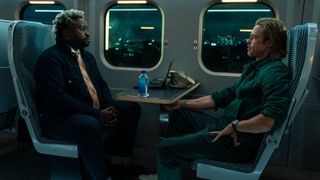
A late-in-the-day decision helped fuse that rigid structure ("Everyone had a beginning, middle, and end to their chapters and then they intertwine from that point forward," McCormick says of the initial cut) with the experimental energy that coursed throughout the production’s veins.
"The original draft is in chapters," McCormick reveals. "We shot it that way, we cut it that way once, and then our editor Elísabet Ronaldsdóttir and David got to a point where it was like these guys are much more intertwined than we think and so is the world. So let’s break it up and see how it feels. It had a flow to it, that was undeniable."
From being the director who needed a little nudge to get on the platform, Bullet Train – based on a 2010 novel by Kotaro Isaka – has helped Leitch head into more uncharted waters with Ryan Gosling in The Fall Guy, an adaptation of the 1980s TV series that featured Lee Majors as a stuntman moonlighting as a bounty hunter.
"What’s great about Bullet Train is it’s not beholden to franchises. I was grateful to be part of the continuation and expansion of Deadpool 2, what a great experience. Bullet Train was completely ours," Leitch says.
McCormick adds, "I call it legacy IP, it's identifiable to certain people but not all the way through. So you can kind of go past it and create its own mythos but have that beginning of a story that you can go expand upon. We're really excited about it. It's gonna be really fun – a lot more action in that one!"
With how off-the-rails Bullet Train gets, that might take some doing. This chapter of Leitch’s burgeoning career may be coming to a stop – but it’s clear he’s ready to continue his journey as one of Hollywood’s leading action directors.
Bullet Train will be released exclusively in cinemas from August 3 in the UK and August 5 in the US. For more, check out the most exciting upcoming movies heading your way soon.
I'm the Senior Entertainment Writer here at 12DOVE, focusing on news, features, and interviews with some of the biggest names in film and TV. On-site, you'll find me marveling at Marvel and providing analysis and room temperature takes on the newest films, Star Wars and, of course, anime. Outside of GR, I love getting lost in a good 100-hour JRPG, Warzone, and kicking back on the (virtual) field with Football Manager. My work has also been featured in OPM, FourFourTwo, and Game Revolution.

